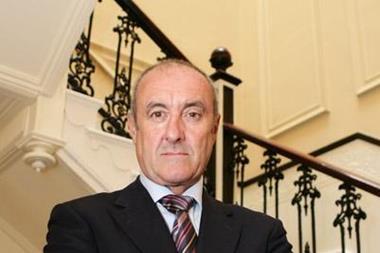While not at the level of the consolidation glory days, broker acquisitions are definitely picking up. But what is it like putting such a deal together? Speaking from the buyer’s viewpoint, we reveal the seven key stages that CCV undertakes for a smooth purchase
1. First enquiry
There are various means by which people end up talking to us about selling their business. The potential vendor may make the first approach – initial contact that may come as a result of us doing some marketing or them visiting our website. Or it may be through one of our regional managing directors doing a trawl of local brokers.
Businesses of a certain size may have advisers acting on their behalf, so they will go to a number of potential acquirers and invite them to register their interest.
2. Initial meeting
Next, we’ll try to set up a meeting where we can sit down together. It’s important to be discreet, so it’s usually somewhere offsite – a hotel perhaps; anywhere you can hire a meeting room. It’s an opportunity for them to tell us something about their business and for us to set out CCV and what a disposal process might look like.
In some cases, that can be the end of it because you might find out something about the business that leads you to decide that there is little merit in continuing the discussion. Or they might, at that early stage, come up with an indication of what they think their business is worth, which may be in excess of the value you’re prepared to put on it.
If that’s where they’re at, you just shake hands and say: ‘Let’s not waste each other’s time.’ It doesn’t happen that often, though; I think because most people who run a business have a decent idea as to what it is worth, and what buyers are paying for other businesses. You tend to deal with people who are at the most senior level in their organisation – they’re bright people. What we are trying to do there is to avoid embarrassment in terms of expectations.
The vendor’s motivation is often down to them looking for an exit. There’s an age demographic here: a number of people who own businesses are 65 and over, and it’s part of their retirement planning. That’s one type of vendor.
There are others who aren’t at
that stage, are not looking to retire, but for whatever reason want to sell part of their business. If you were the majority shareholder of a big business, you might decide that it would make sense to convert some of that equity into cash, but to keep working and enjoy running the business. These are the people where we may buy part of their business, but they keep part and we leave them in control to run it.
Others may, for example, run a business that is partly financial services and partly general insurance, and they may have decided they want to focus on the financial services arm of the business and sell the GI arm.
At the end of the meeting, we normally suggest that they take a few days to reflect, and that we’ll call them in a couple of days’ time to see whether they want to take it to the next stage or not. They may decide not to, but most people will continue.
3. Decision to sell
Not all conversations with potential vendors lead to an imminent sale. In some cases, making the decision to sell can take years. There are some individuals we have an ongoing dialogue with. They may be in their mid-50s and say: ‘No, I’m not ready to sell yet, but when I do, I want to have a conversation with you guys.’
4. Information gathering
Once the other party makes the decision to sell, they will inform us of that and then we go on to the next stage, which is the collation of some preliminary information on which we can make a valuation.
Here, we’re trying to understand in a bit more detail the premiums they write, the commissions they earn and the latest set of accounts, so we can see the income that has come through as well as the costs and their level of profitability.
Occasionally, we see things we don’t fully understand, and that normally involves a further conversation with the vendor.
They might have sold part of their business or some assets, or may have incurred some exceptional costs. We try to get a normalised view of their business, taking the exceptions out.
5. Formal offer
Once we have collated all that information, this is normally enough for us to come up with a valuation. We have certain levels of return that we need to achieve, and we put together a valuation based on the numbers we see and projections of when they will deliver those returns.
We like to pay the right price. If you go in too low, you potentially embarrass yourself and the vendor will tell you to stop wasting their time. And if you overpay for a business, you never get your money back. This process is all about is trying to work out what is the right price to deliver the returns that we need to make.
The formal offer is a written offer and is not just about the value of the business. It may be about the shareholding, it may concern such considerations as how and when we pay.
For the negotiations, we sit down face-to-face with the vendor and try to agree a price that will get the deal over the table. That takes as little or as long as it takes. It’s no different to buying any asset; there’s a degree of negotiation that will always take place.
Up until the point of having an offer accepted, the vendor may have someone else in the wings, but once we get to having a formal offer accepted, our expectation is that we’re in an exclusive arrangement.
Do we ever get in bidding wars? That’s not really been our experience to date. I guess that goes to the heart of how many people are looking to buy the business and how we came across the vendor in the first place. If we marketed to them or it’s someone whom one of our guys knows pretty well, hopefully we can avoid having too many other parties involved in the acquisition process – if we can avoid it at all, we do.
6. Due diligence
At the due diligence stage, we validate the preliminary information and try to understand some of the other aspects, for example seeing the leases on any properties, understanding the vendor’s compliance regime, trying to understand who is employed by the business, including whether they have specific contracts of employment, and anything else we need to be aware of.
One of our compliance officers will go in and do the compliance bit; someone from the IT department would go in and do the IT – whoever has the technical expertise in that area is who we send in.
To some extent, you’re at the mercy of the vendor. This is all about him lining up the right guy in his business to talk to. I like to think we could do it in a month. The actual number of days we spend in the office is not that many, but it’s about getting the vendor to pull the data together, find leases and all that kind of stuff, and then us analysing them.
Once you’ve got the offer accepted, you just want to get over the line, get the due diligence done, hope it doesn’t reveal any gremlins and get to completion.
Not many deals fall down during due diligence, but it can throw up items that affect the value of the business. They don’t tend to prevent a deal being done, but they may require you to go back and look at the value.
7. Completion
Once we are comfortable on the due diligence, we sign off and then it’s just a matter of getting the advisers and lawyers for both sides into the same room, working through the legal documentation and agreeing the completion date. It may be that the vendor wants it to line up with the end-of-year accounts, or another date of his choosing.
That’s when they get their money, though we tend to have earn-out patterns depending on the size of the business.
We don’t go in and change the name over the door; we leave it as it is. When we buy a business, we have our own internal 90-day plan. We go in and have conversations with the staff: on the first day we would introduce ourselves and, from that date, we start a process of explaining to the wider management team how we operate and what we’re looking to do.
It’s a process we’re well used to and it’s really about execution, delivering on all the things we said we’d do. There is a real buzz when somebody accepts and a much bigger buzz when they complete because, as with any of these things, it can fall down between the various stages of an acquisition. You do get a real kick out of it when it all comes together. IT
Michael Rea is chief executive of CCV





































No comments yet